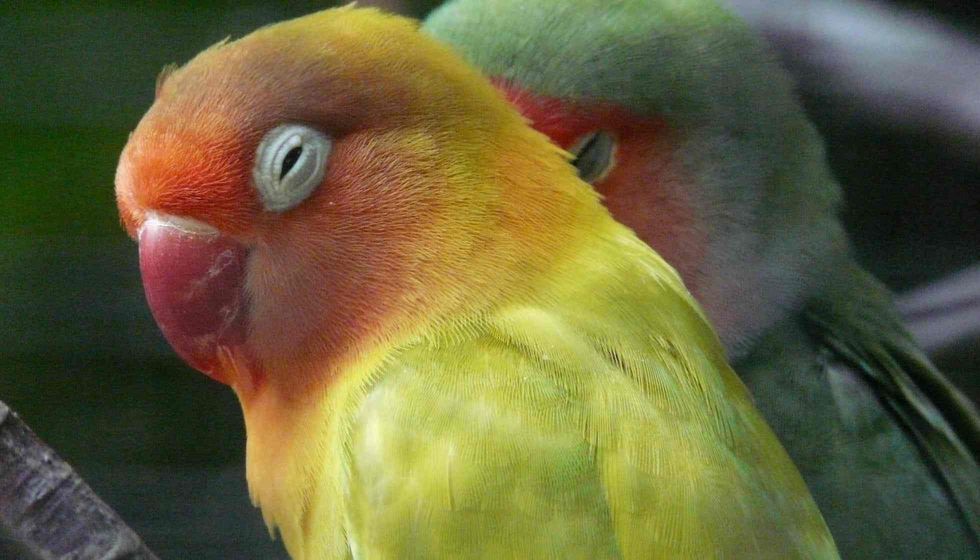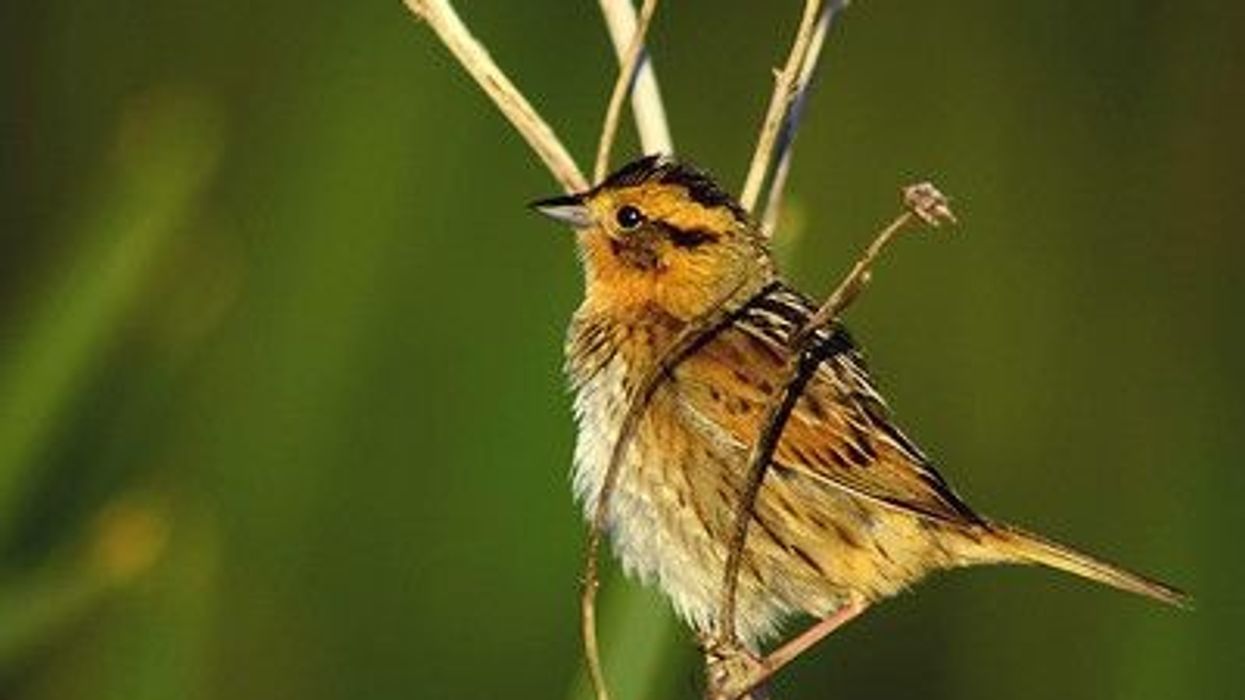Fischer's lovebird, 'Agapornis Fischeri' as the scientific name suggests, is one of the species of lovebirds that can be found in the wild areas of Africa.
Discovered by the German explorer Gustav Fischer, this species of bird got its name after Gustav's exploration. Although these birds have been known since the 19th century, it is said that they were initially bred in the United States of America only in the initial phase of the 20th century, 1926 to be precise.
Currently, these birds can be spotted in abundance in parts of Tanzania as well as the southeastern parts of Lake Victoria.
These lovebirds have a striking similarity with parrots because of the colors as well as the genus they share with the parrot species.
Although they are petite and tiny in size as compared to the parrots and other similar genus sharing birds, their lifespan is half as that of a parrot ranging from 10 years to almost 25 years.
Fischer's lovebird is known for its variation in the color scheme, its high-pitch sound, the ability to create durable and healthily powerful bonds with their partners as well as owners if taken as a pet.
These birds are predominantly granivorous, but due to the inclusion of fruits and crops in their diet, these birds can also be classified as omnivores in nature.
Want to read more about different kinds of birds? The crowned eagle and the tawny eagle are sure to fill up your quest for being informed about the wildlife and the nature of peculiar birds.
Fischer's Lovebird Interesting Facts
What type of animal is a Fischer's lovebird?
Fischer's lovebird is a bird from the parrot species known as Agapornis.
What class of animal does a Fischer's lovebird belong to?
Fischer's lovebirds belong to the class Aves.
How many Fischer's lovebirds are there in the world?
Although these young birds are commonly used in the pet trade, currently, the population of Fischer's lovebirds ranges between 290,000 to 1,000,000 across the world.
Where does a Fischer's lovebird live?
Fischer's lovebirds live in areas that have isolated clusters of trees, specifically in the green lands and savannas of Africa, and other locations with a high range of agricultural fields.
During the warm days, these lovebirds can be easily spotted near water holes with their beak in the water as those locations are easier for them to drink water frequently throughout the day in the wild.
What is a Fischer's lovebird's habitat?
Fischer's lovebirds are often spotted at a distance of 1100 meters to 2200 meters above sa level. Their habitat is majorly present in the regions of east-central Africa, Tanzania, Puerto Rico, and few parts of Florida too.
Who do Fischer's lovebirds live with?
Fischer's lovebirds usually live in a flock of 10 to 15 birds. Due to their ability to make quick and strong bonds, they can also live with their human owners under happy and healthy circumstances.
During longer distance travels, Fischer's birds prefer traveling in a flock of 10 to 20 individuals in an attempt to keep each other safe from any kind of danger.
How long does a Fischer's lovebird live?
Fischer's lovebirds have a lifespan of 10 years to a maximum of 25 years.
How do they reproduce?
Fischer's lovebirds have a breeding season that is focused around January until the end of July. The pair of Fischer's lovebird symbolism is equal to that of true liking and bonding as Fischer's lovebirds care for their partner and mate for life.
The female bird during the breeding period nests in a tree hole around 2 to 15 m above the ground.
They lay their eggs in a clutch of between four and eight eggs that are white in color. The female bird incubates her eggs for 23 days, after which the fledging process takes around 38 to 42 days for the newborn Fischer's lovebird flying process.
What is their conservation status?
Even though Fischer's lovebirds have been bred in the United States since 1926, Fischer's lovebird's classification has been stated as Nearly Threatened according to the IUCN status. The reasons for this could also be due to the cage and pet environments created by humans for these species.
Fischer's Lovebird Fun Facts
What do Fischer's lovebirds look like?

Fischer's lovebirds have a lot of colors on their small bodies.
This bird species is that of the parrots and shares a lot of visuals with the parrots too.
Just like a parrot, Fischer's lovebirds too have a white circle that consists of bare skin which is also called a white ring or an eye-ring. The majority of the bird population has green feathers on its back, chest and wings.
The top of their head is olive green and as it moves downwards the color becomes a dark shade of orange with the neck being golden yellow and a bright red downward-pointing beak just as that of a parrot.
The bird is petite and even though this color scheme is the general progression of how colorful they look, Fischer's lovebirds have a lot of other color-focused species that go from blue Fischer's lovebird to a violet Fischer's lovebird, mauve Fischer's lovebird, as well as a turquoise Fischer's lovebird and another common variety, is the yellow Fischer's lovebird.
How cute are they?
Fischer's lovebird colors are quite a spectrum to look at and observe. The active Fischer's lovebird personality due to their never-ending chatter adds up to their cuteness factor.
How do they communicate?
Even though this species of lovebirds are known for their high-pitched noise and the unstoppable chatter that they involve themselves in, these lovebirds are known to use their body language to communicate rather than talk.
Just like a young parrot, these lovebirds have a hoarse and high-pitched voice which might get irritating for the neighbors as they do not stop tweeting.
How big is a Fischer's lovebird?
The Fischer's lovebirds are tiny replicas of the parrot species and are usually 3.5 in (9 cm) long with a height of 2 - 5 in (6 - 15 cm) inclusive of their wingspan. Even though they are as big as scarlet robins they are a few grams heavier.
How fast can a Fischer's lovebird fly?
Following their behavior of being active, these lovebirds are fast flyers, especially when in wild and free spaces. There's a high chance of one being able to listen to their wings flutter as they fly due to their quick speed. They can fly with a speed of 2700 deg/s to 5400 deg/s when they sense any danger.
How much does a Fischer's lovebird weigh?
Fischer's lovebirds are tiny birds who weigh somewhere between 43 and 58g or approximately 0.09 - 0.12 lb.
What are their male and female names of the species?
A Fischer's lovebird's sex does not help in distinguishing males from females. These lovebirds got their name after a German explorer named Gustav Fischer, and do not have any specific names based on their sex.
What would you call a baby Fischer's lovebird?
Just like other birds, the baby Fischer's lovebirds can also be called hatchlings.
What do they eat?
The Fischer's lovebird diet involves a lot of seeds, berries, and other fruits. Their food helps them keep their physical health up to the mark for them to stay true to their behavior of being active all the time. A few of these lovebirds around the agricultural areas might also involve maize and millets in their diet.
Are they dangerous?
As friendly and active as these lovebirds can be, Fischer's lovebirds are also known to get aggressive at times leading them to bite the other lovebird in their cage or even the owner of this pet.
Although they are not deadly in nature these lovebirds just like the others of their kinds of birds might carry a few zoonotic diseases with them which might hamper the pet owner's health too.
Would they make a good pet?
Fischer's lovebird pet in a cage is a less common sight in captivity scenarios. But if one wants to get these lovebirds as pets, they sure can be cute affectionate birds with an active behavior of making high-pitch noises which might bother the neighbors.
Did you know...
Lovebirds are said to die if they are separated from their partners. Here's a fun fact: these birds do not die after separation.
Of course, with the ability to create stronger bonds, deep connections, and following the structure of monogamy; when separated from their partners they do show signs of sadness and depression, especially in a cage or when held in captivity.
It is somewhat difficult to differentiate between an adult and a young Fischer's lovebird. The only difference is that the young ones might have a slightly pale or dull color scheme and a brown tip of the beak than that of the adult birds.
Even though these lovebirds might make good pets, a great number of farmers consider these cute-looking pretty birds as pests. This is mainly because Fischer's lovebird is used to feeding on crops just as maize and millets when living near the agricultural areas.
Hence, no matter how beautiful these birds look, they end up ruining the farmer's hard work leading to their frustration at times.
Do Fischer's lovebirds talk?
It is very rare for Fischer's lovebirds to talk like parrots, this is majorly due to their high-pitch and hoarse voice. In the case of the female lovebirds, they can speak and talk with their owners as pets but that might surely not always be the case either.
Having your own Fischer's lovebird
Fischer's lovebirds are cute and tiny birds with vibrant orange, green, yellow colors bird with a red beak can surely be considered good for pets.
In comparison with the other pet birds, these do not cost as much.
If one wants to buy these birds as pets, one can get one for themselves which might cost around between $35 and $100. When buying a cage for these birds, one needs to be careful of buying a little larger cage as Fischer's lovebirds are known to like having their own space.
It is also important for the owners to manage their diet of fruits and seeds that provide them with the best nutrients these birds require to keep them in a good health as the healthier they are the better their lifespan is.
Here at Kidadl, we have carefully created lots of interesting family-friendly animal facts for everyone to discover! Learn more about some other birds including the secretary bird and the blue and yellow macaw.
You can even occupy yourself at home by drawing one of our Fischer's lovebird coloring pages.










